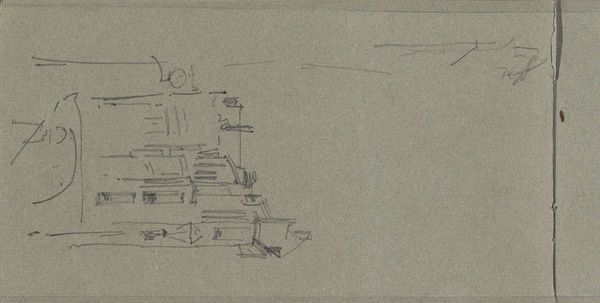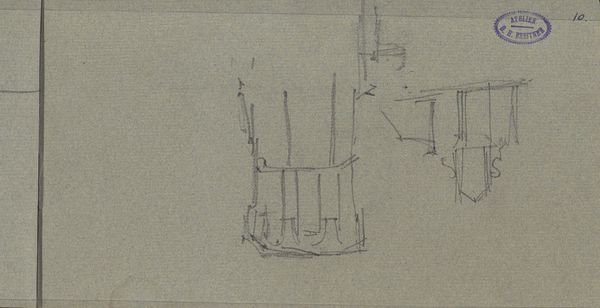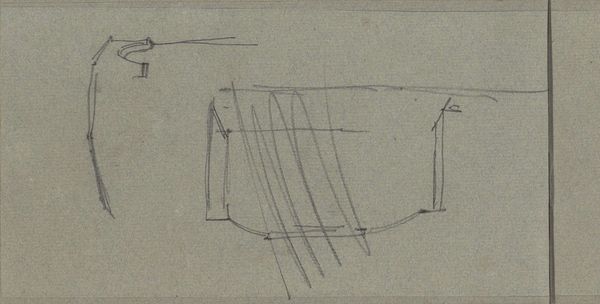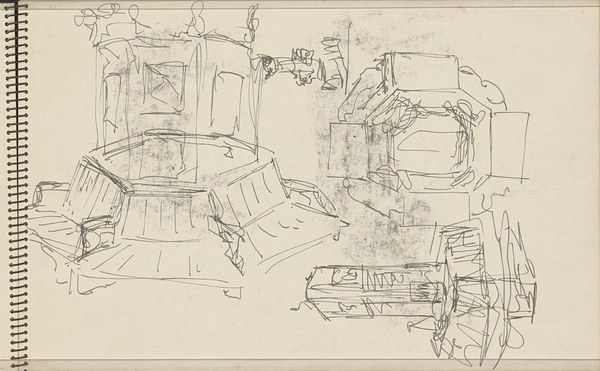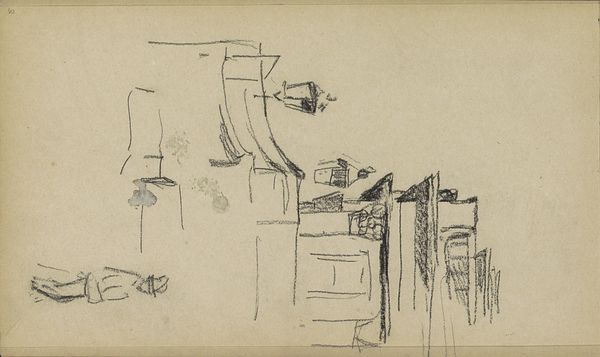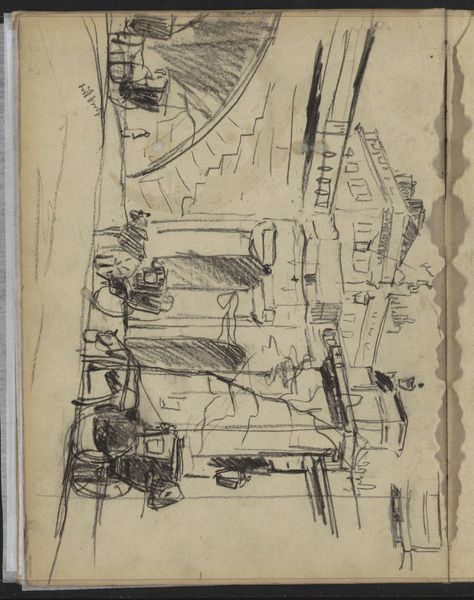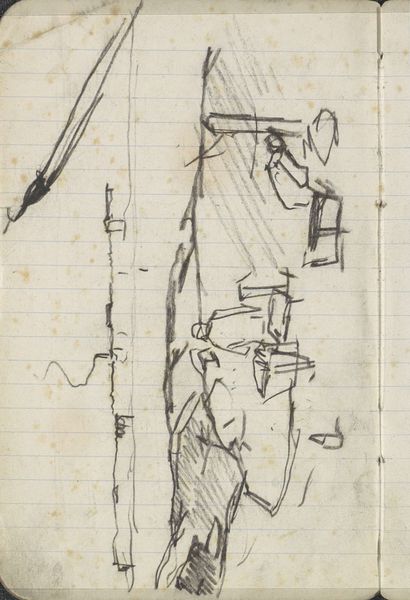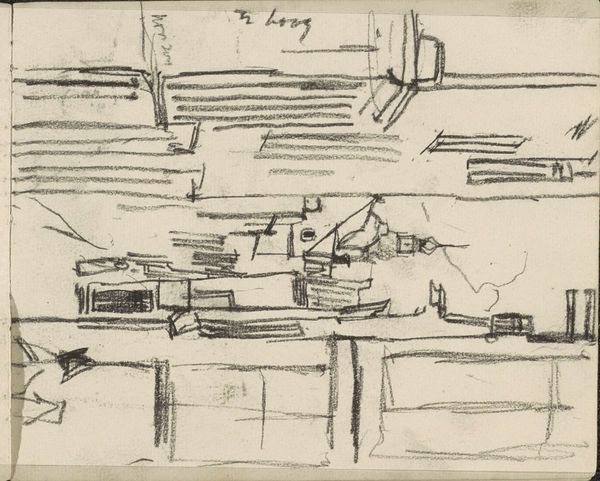
Gezicht op de toren van landgoed Torenzicht te Poeldijk 1883 - 1885
0:00
0:00
georgehendrikbreitner
Rijksmuseum
drawing, pen
#
drawing
#
impressionism
#
landscape
#
line
#
pen
#
cityscape
#
building
Copyright: Rijks Museum: Open Domain
Curator: This is "View of the tower of the Torenzicht estate in Poeldijk," a pen drawing by George Hendrik Breitner, made sometime between 1883 and 1885. Editor: It feels so ephemeral. I see almost ghostlike lines forming a structure, like a half-remembered place drawn from memory. The stark lines on the muted paper highlight a rough architecture and sketchy aesthetic. Curator: Breitner was, of course, part of the Amsterdam Impressionism movement, and pieces like this reveal his interest in capturing fleeting moments. Note how this drawing might have served as preparatory work. The location, Torenzicht, was a popular subject for artists. Its imagery helped cultivate regional pride, associating it with the emerging Dutch identity. Editor: Yes, this work provides access to his working process. The materiality—the simplicity of pen on paper—foregrounds immediacy and unmediated expression, emphasizing artistic labor. Look closely; we see an artist capturing the bones of a structure. It challenges this idea of high art through his humble and spontaneous technique. Curator: You’re right. Though seemingly informal, the drawing allows us a view into 19th-century Dutch society, beyond its representation. These structures also spoke to the social and economic changes transforming the Netherlands, marking moments of both pride and industrial advancement. The elite displayed this art and these architectural elements as proud signifiers of land ownership and power. Editor: Definitely, this connects it to the systems in which the artistic production was circulated and consumed. The act of creating it by hand ties Breitner intimately with the urban fabric he documents. The hasty line strokes become indexical traces, marking not just visual facts, but physical experiences, that is, moments within this ever-shifting landscape of society. Curator: Considering that, Breitner’s rapid execution tells its own story about change during that period. One wonders whether his interest really lies in that static landscape he illustrates in the conventional narrative about Breitner and impressionism. Editor: Precisely. It invites questions on artistic skill and its association to its economic structures in the Dutch art world at the time. It's more than just a building; it represents art’s role within a network of complex relations. Curator: Well, I am starting to question how the public display of such raw preparatory works affect how we attribute the narrative, the artist’s agency and meaning. Editor: A great reminder of art's multilayered communication!
Comments
No comments
Be the first to comment and join the conversation on the ultimate creative platform.
